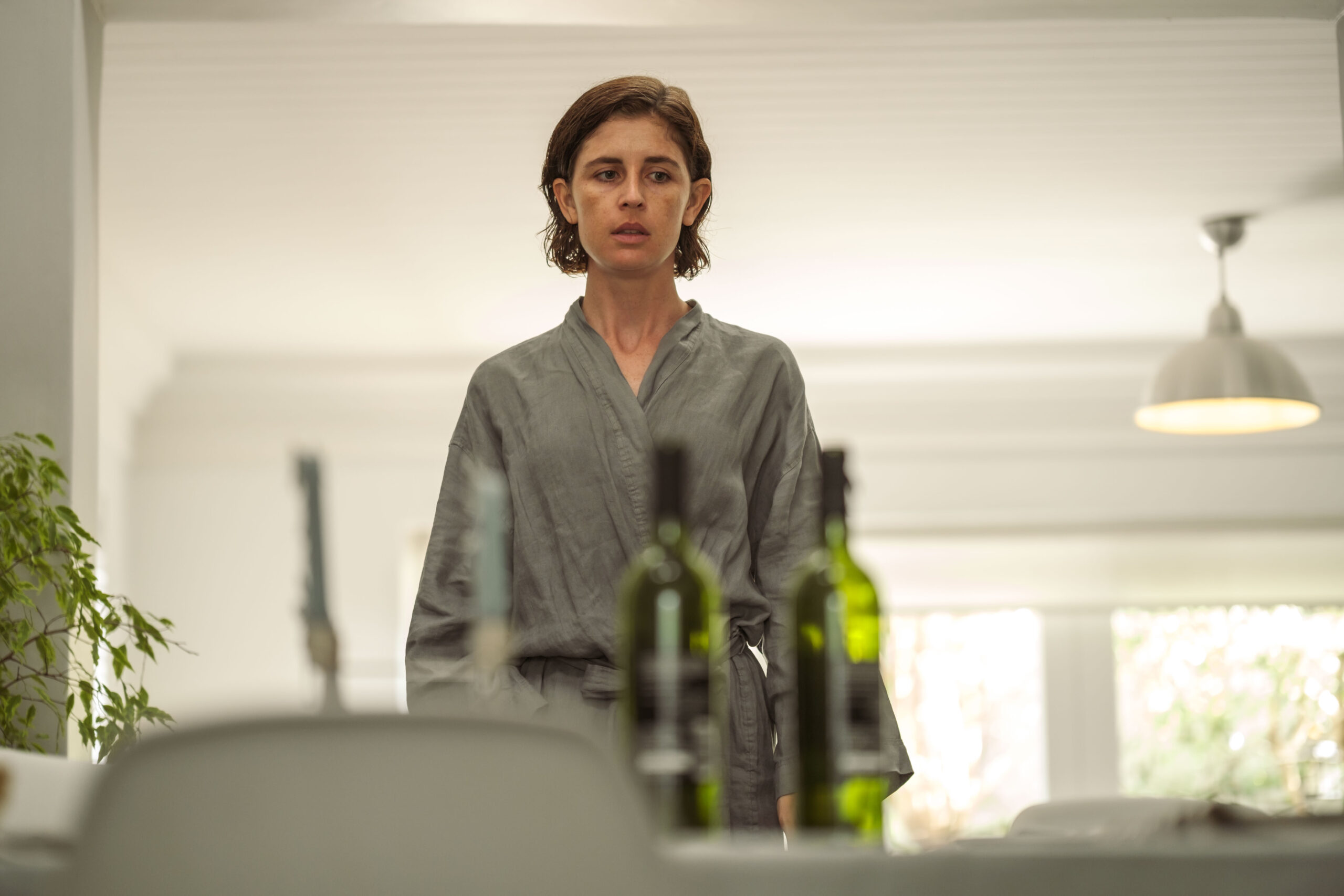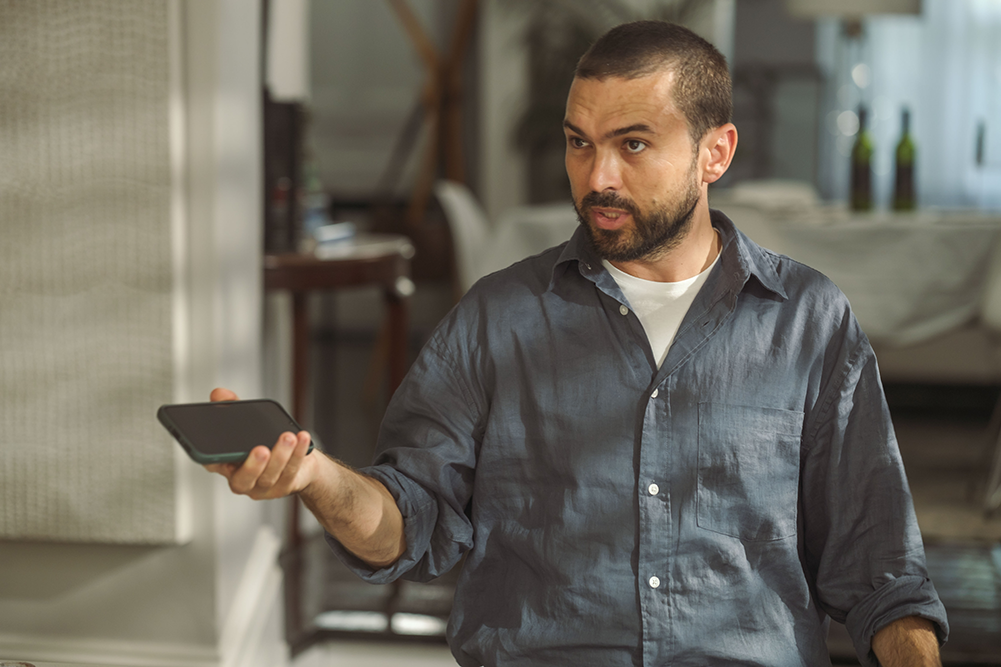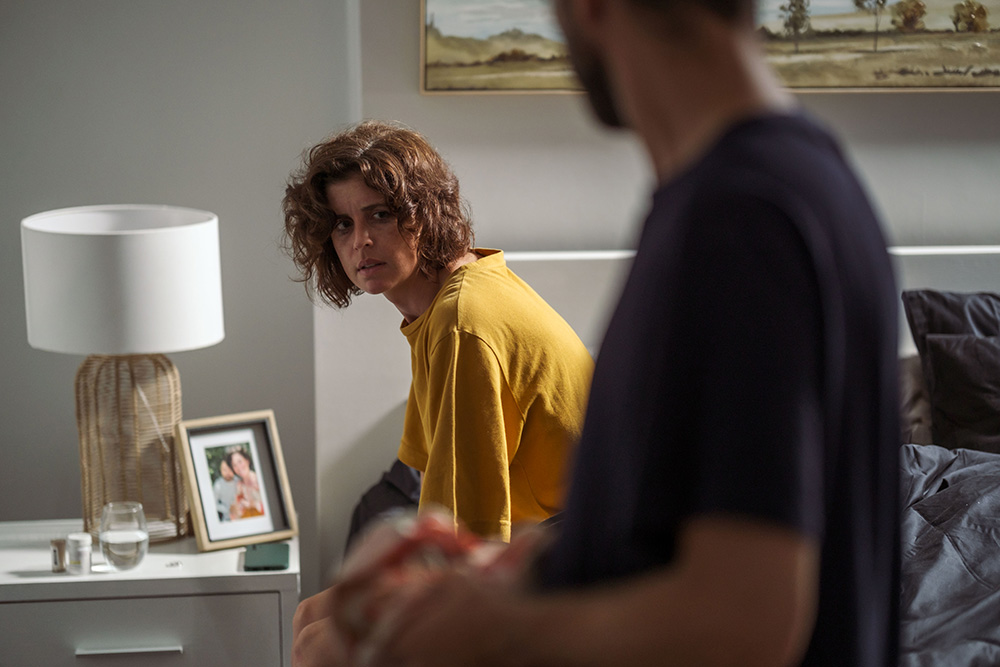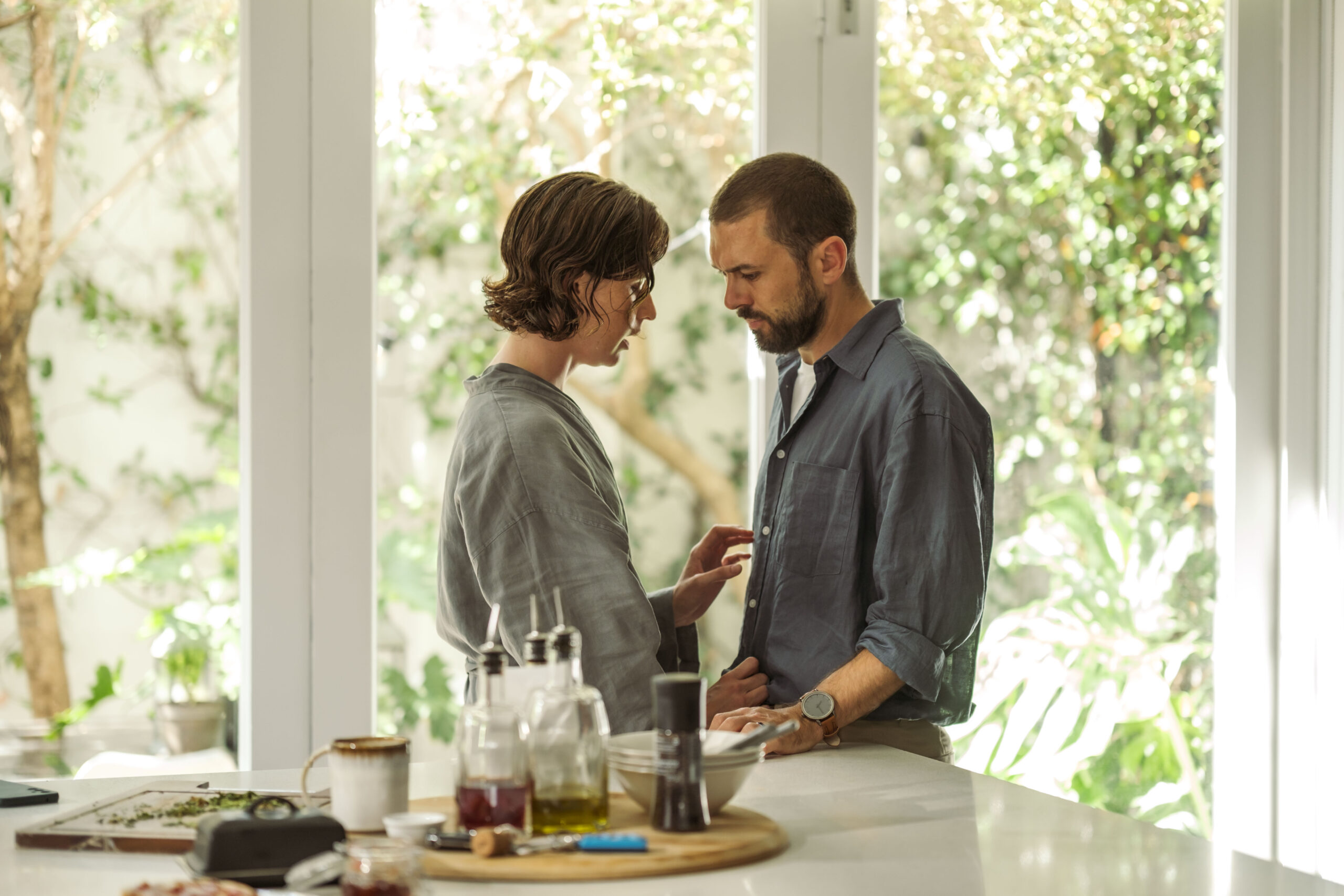



Shotgun short film: In die verloop van
The impact of a terrible loss on the relationship between two people is the theme of In Die Verloop Van, a short film by Emma Kotze and Philip Rademeyer.
After a dramatic evening, Jana (Kotze) and Chris (Wilhelm van der Walt) face a new day, each occupied by their own thoughts. Something serious and unspoken hangs in the air between them. As they follow their morning routine, the events of the previous night are gradually revealed.
Emma and Philip developed the story and concept together, and Philip wrote the screenplay. He also directed the film with its intimate exploration of how life proceeds unabatedly, despite tragedy, pain and joy. They answered some questions about the film.
Emma, in addition to being a theatre and film actress, you also had a hand in this film’s screenplay. Why do you enjoy this aspect of the creative process?
Storytelling for theatre and film is the greatest motivation for my work. It is an incredible privilege to tell stories and, in the process, take people along on a journey. That is also why I enjoy working behind the scenes, because I can have more control of the narrative.
Why did you want to tell this particular story of Jana and Chris?
Emma: The short film format was the first determinative factor. We researched the reasons for the success of these films extensively, and the answers include threading a line of tension in only ten to twenty minutes, followed by an exposé.
The story came to us when we had a conversation about how mundane loss really is. The title engages with the brashness and brutality of the fact that life merely goes on, no matter what happens. We decided to zoom in on how difficult basic, everyday activities can be, and how we are unable to escape it. As the writers, we had to keep the narrative honest, because it is impossible to assume that everybody will experience similar situations in the same way.
Philip: The film’s topic is something that people are hesitant to discuss. During our research and from what our friends say, we found a general tendency to conceal the subject matter, be it for reasons of guilt or shame, or out of fear to lose your privacy. From the start, it was also important to include both the woman and the man in the story, because both are affected by the events, even if it influences them in different ways.
You two have collaborated regularly in the past. Why is your creative partnership so successful?
Philip: Emma and I have known each other for a long time, since our varsity days. We are not colleagues only; we are also good friends. The friendship is an asset when we work together, because we understand each other as human beings, and not only as actor/writer/director. We love exchanging ideas and to build on each other’s ideas, because we are relaxed with each other, and we respect each other’s professional insights.
Our creative intuition is also very similar, we were therefore always on the same page in terms of the story and how we envisioned its look and feel.
Emma: I really enjoy writing concepts and developing stories, while Philip is an expert in dialogue and character development. There is little dialogue in our movie, but whenever something needs to be said, Philip captures it perfectly. As a director, Philip allows me to always come back for more! He has a clear vision, but he allows actors to reach the point where he wants them to be, in their own way. He approached the process with emotional intelligence.
Philip, the story of In Die Verloop Van is rich in expressing emotion without it being verbalised. What challenges and opportunities did you experience as a writer and filmmaker with this genre?
The biggest challenge of a short film happens to be the element that can make the movie really powerful – to tell a story that touches the heart of the viewer within a short time. You don’t have 90 or 120 minutes to present a complicated narrative or to build your characters and their world with expansive detail.
The challenge with this movie is that we meet the characters at a time they are experiencing a tragedy that puts their relationship to the test. So, the screenplay, direction, acting, design and camera work must capture that emotionally charged world accurately from the very first moment.
Film is a visual medium. As a writer I wanted to challenge myself to use as little dialogue as possible. In my theatre plays the characters talk a lot, so I wanted to do something different with this film, and to portray a specific atmosphere effectively.
Philip, please tell us how you experienced working with Emma and Wilhelm in the lead roles?
I have worked regularly with both Emma and Wilhelm in the past. We understand one another, we talk the same language when it comes to creative work, and we have developed a shorthand – when I give feedback between takes, they understand exactly what I mean, even if I use one word only. They are outstanding actors – they master the art of portraying emotions subtly, and to engage with the camera.
Emma, how did you approach the part of Jana, and to convey her experience of loss?
The incident central to what happens in the movie, is very sensitive. The biggest challenge for me was to express a sense of rawness. I haven’t experienced what happened to Jana, but I used my encounters with loss as a point of contact.
Sound and colour are important and functional elements of the movie. Did you make a strategic decision about these aspects when you wrote the screenplay?
Emma: The film relies heavily on its visual state, more than anything else. To keep viewers’ attention with a rather simple concept, we had to pay a lot of attention to all the visual elements. Colour reflects a particular feeling throughout the film.
The sound aspect developed later, even though we were convinced from the start that the film wouldn’t have a soundtrack. The idea of amplifying ordinary sounds came naturally and strengthened the concept we had in mind: that inevitability that characterises the sound of a toaster; of a garage door opening. The technical team was incredible: Meekaaeel Adam was the wonderful cinematographer; Matthew Swanepoel did the editing and John Claassen was responsible for sound when we were on location, while Pressure Cooker Studios took charge of the sound design and mixing afterwards.
Philip, In Die Verloop Van is included in the Shotgun Shorts section of the Silwerskerm Festival. What excites you about this category?
It is an excellent initiative. The short film category is usually reserved for new and emerging filmmakers, but Shotgun Shorts also offers established artists an opportunity to make short films. Part of the brief of this category was to challenge yourself creatively, therefore offering writers and directors a chance to try out things they perhaps wouldn’t have otherwise.
